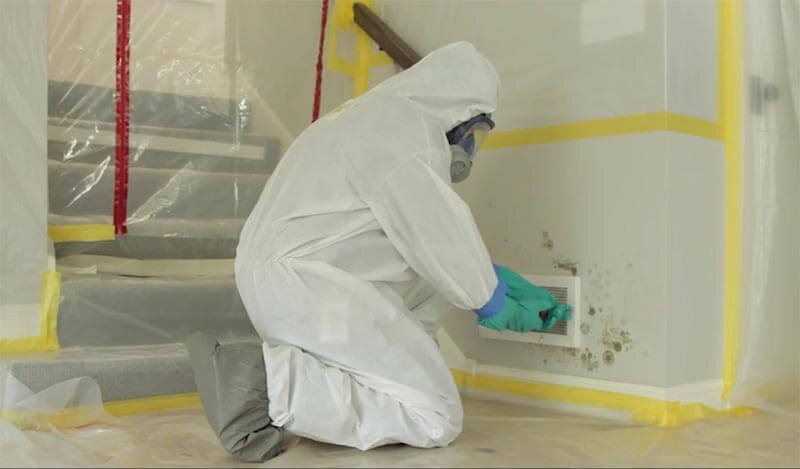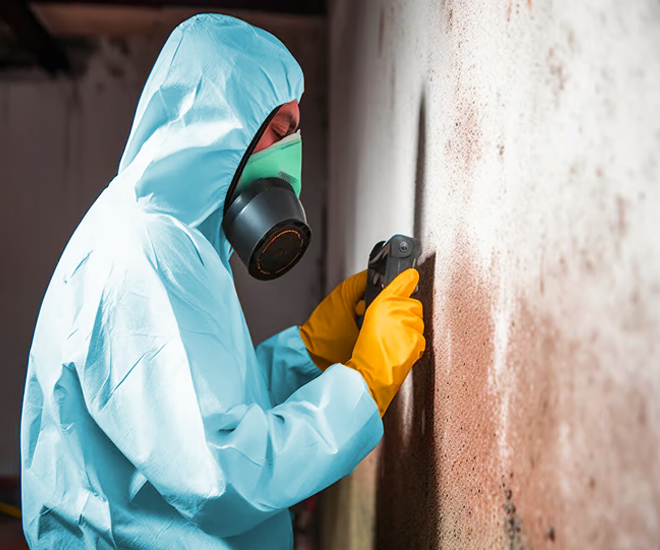Crafting a Thorough Post Mold Remediation Report
Crafting a Thorough Post Mold Remediation Report
Blog Article
Your Ultimate Overview to Article Mold Removal Methods
In the after-effects of mold problem, recognizing how to successfully remove the mold and mildew and stop its reoccurrence is vital for maintaining a healthy interior atmosphere. From choosing the ideal cleaning and sanitizing techniques to carrying out strategies for lasting mold and mildew prevention, each step in the remediation journey plays a crucial duty in guaranteeing a successful outcome.
Understanding Post-Mold Remediation Refine
After finishing the mold and mildew removal procedure, it is crucial to comprehend the post-mold remediation techniques that are necessary to guarantee a extensive and reliable clean-up. When the mold and mildew has actually been gotten rid of, the next step includes cleansing and disinfecting the affected locations to protect against any type of regrowth of mold. This consists of utilizing specialized cleaning up agents to wipe down surface areas and eliminate any kind of continuing to be mold and mildew spores. It is important to dry out the location entirely to prevent the growth of mold and mildew in the future (After mold remediation). Proper air flow and dehumidification can aid in this process.
Moreover, carrying out a last inspection post-remediation is crucial to guarantee that all mold and mildew has been successfully eliminated. If the assessment exposes any type of sticking around mold, additional removal may be needed.
Efficient Cleansing and Sanitizing Techniques

Avoiding Future Mold And Mildew Development

Importance of Correct Ventilation
Proper ventilation plays an important function in avoiding wetness build-up, a key consider mold and mildew growth within indoor settings. Efficient ventilation systems aid remove excess humidity from the air, reducing the possibilities of mold spores discovering the dampness they need to sprout and spread. Without adequate ventilation, interior rooms can end up being a breeding ground for mold and mildew, bring about possible health and wellness dangers and architectural damages.
By ensuring proper air flow, air flow systems can also help in drying out damp areas faster after water damage or flooding occurrences, additionally discouraging mold growth. testing air quality after mold remediation. Precede like shower rooms, basements, cooking areas, and attics where moisture levels often tend to be greater, setting up and maintaining efficient air flow systems is important in avoiding mold infestations

Surveillance and Upkeep Tips
Given the crucial duty that appropriate air flow plays in protecting against mold and mildew growth, it is imperative to establish effective surveillance and upkeep tips to ensure the ongoing capability of ventilation systems. Routine evaluations of ventilation systems ought to be performed to examine for any kind of indications of clogs, leakages, or breakdowns that could hinder proper air flow. Surveillance moisture levels within the residential property is likewise critical, as high humidity can contribute to mold growth. Installing a hygrometer can help track moisture degrees and sharp home owners to any type of spikes that may need attention. Additionally, ensuring that air filters are look these up consistently cleaned or changed is necessary for preserving the performance of the ventilation system. Applying a routine for regular upkeep tasks, such as air duct cleaning and HVAC system assessments, can assist prevent problems before they intensify. By remaining proactive and conscientious to the condition of ventilation systems, building proprietors can efficiently mitigate the risk of mold regrowth and maintain a healthy interior setting.
Final Thought
In verdict, post-mold remediation methods are important for ensuring a safe and clean atmosphere. Understanding the procedure, Look At This implementing efficient cleaning and sanitizing methods, avoiding future mold development, maintaining correct air flow, and routine monitoring are all essential action in the removal procedure. By adhering to these standards, you can efficiently remove mold and stop its return, promoting a healthy living or working room for all occupants.
In the after-effects of mold infestation, knowing how to efficiently eliminate the mold and mildew and prevent its reoccurrence is paramount for preserving a healthy indoor setting. When the mold has been eliminated, the following action includes cleansing and disinfecting the impacted areas to avoid any type of regrowth of mold and mildew - what to do after mold remediation. After getting rid of visible mold development, it is vital to cleanse all surfaces in the damaged location to get rid of any kind of continuing to be mold spores. To further boost mold avoidance steps, it is vital to address underlying problems that at first led to mold and mildew development.Given the important role that appropriate air flow plays in protecting against mold growth, it is vital to establish reliable surveillance and maintenance ideas to guarantee the ongoing capability of air flow systems
Report this page